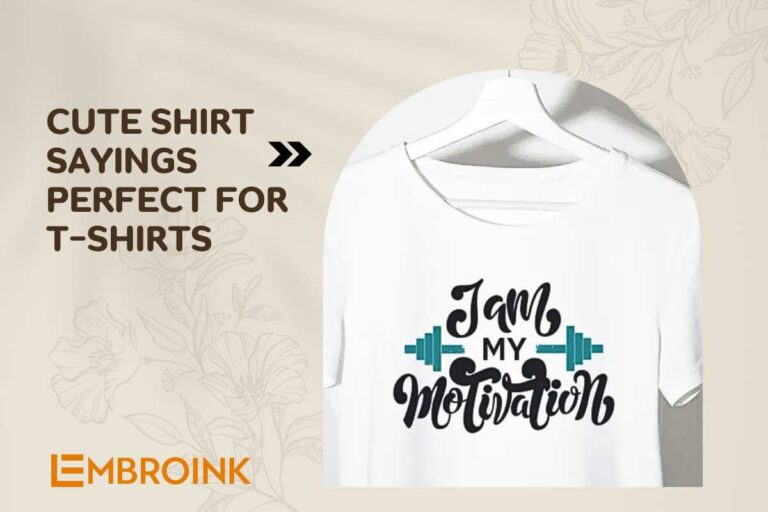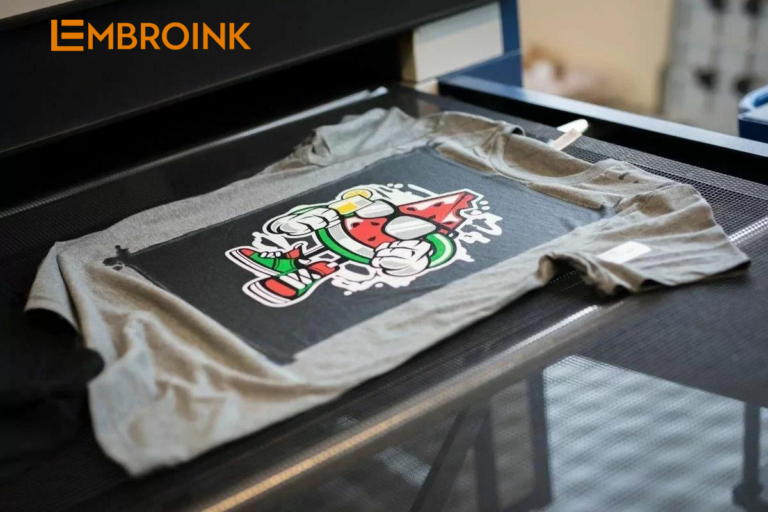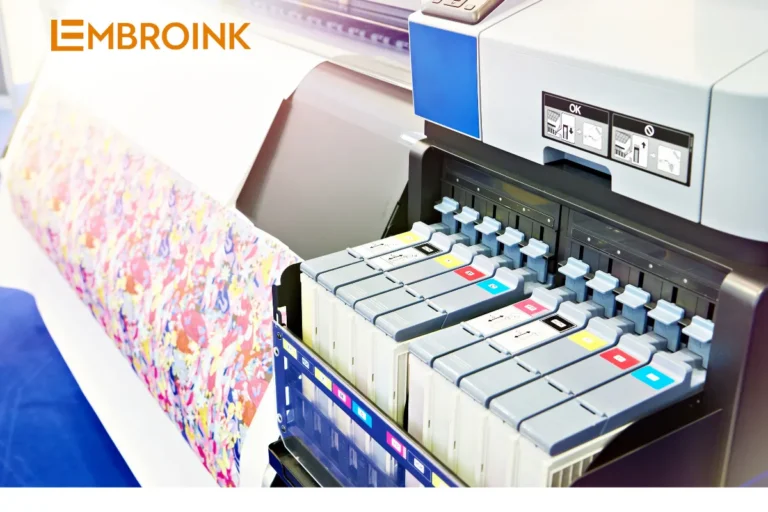How to store embroidered products on demand stay durable
Preserving custom embroidered products is not just a simple task to keep them away from damage and deterioration, but also a way to maintain and showcase the beauty of delicate craftsmanship. Each embroidered product carries within it a story, skill, and dedication of the embroiderers, and proper preservation is a way to honor the value of every tiny detail. Let’s explore with EmbronInk the methods and necessary details to ensure that your custom embroidered products are always preserved to the best possible standard, keeping them beautiful and durable over time.
Why store embroidery products on demand?
Storing custom embroidery products is essential for several reasons. Firstly, proper storage helps preserve the intricate details and vibrant colors of the embroidery, ensuring that the product remains visually appealing over time. Additionally, it respects and protects the craftsmanship and dedication of the embroiderers who put their skills into creating each piece.
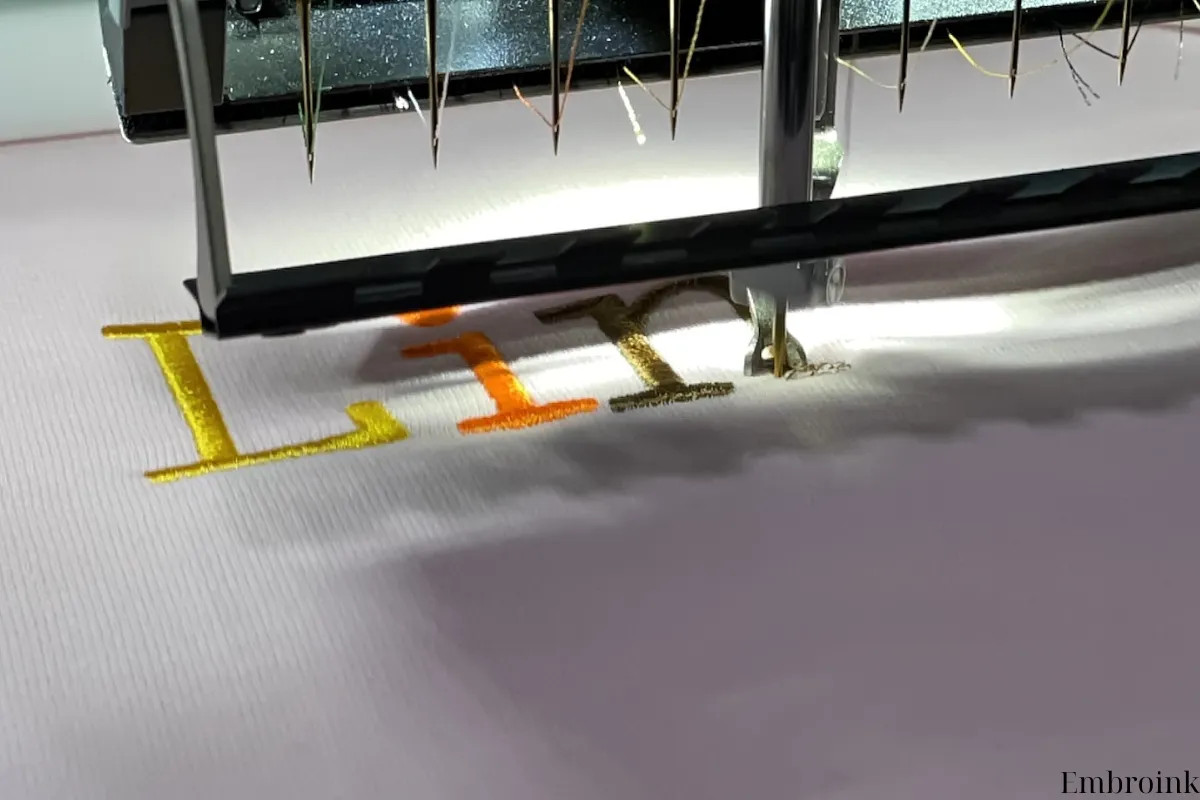
Furthermore, storing embroidered products correctly is a way to safeguard their cultural and sentimental value. These items often carry stories and traditions within them, and preserving them ensures that these narratives are passed down through generations.
Moreover, storing embroidery products on demand can ultimately save costs. By maintaining them properly, there is less likelihood of damage or deterioration, reducing the need for repairs or replacements in the future.
Preparatory steps before storage
Before embarking on the process of preserving embroidered products, careful preparation is the crucial first step to ensure that the items are preserved most effectively. Below are the steps to follow:
Thorough embroidery product inspection
To effectively preserve embroidered products, thorough inspection is the crucial first step. Below are the detailed steps to perform this inspection:
- Check for damages: Start by inspecting every part of the embroidered product to identify any damages such as loose threads, tangled threads, or any stains. Use natural light or a flashlight to carefully examine each detail, focusing particularly on areas prone to high wear and tear, such as edges, corners, or outlines.
- Address identified issues: If any issues are detected, such as loose threads or tangled threads, proceed to repair the product before beginning the preservation process. Use a needle and thread of matching color to mend any loose threads or correct any tangled threads. For heavy or stubborn stains, use appropriate cleaning methods to remove them without compromising the quality of the product.
- Ensure completeness before preservation: After completing the repair and cleaning process, ensure that the embroidered product is complete and free from any remaining issues. This ensures that the product will be preserved effectively and maintain its quality and beauty over time.
By performing a thorough inspection of the embroidered product and addressing any identified issues before preservation, you can ensure that the product will be effectively preserved and maintain its beauty and value over time.

Remove any stains
To preserve embroidered products effectively, removing stains is a crucial step that cannot be overlooked. Below are the details to execute this process:
- Use appropriate cleaning methods: Begin by identifying the type of stain on the embroidered product. For light stains such as dust or minor dirt, you can use gentle cleaning methods like wiping with a soft cloth or a soft brush. Ensure that you use cleaning agents suitable for the fabric of the embroidered product and test on a small area before applying to the entire surface.
- Seek expert advice: In cases of heavy or stubborn stains, especially on embroidered products with delicate elements such as fine fabric or small stitches, seeking the advice of experts in cleaning embroidered products is a wise choice. Experts can provide specialized cleaning methods and products to safely and effectively remove stains without causing damage to the product.
By carefully and accurately removing stains, you can ensure that the embroidered product is well maintained and retains its beauty over time. Note that using appropriate cleaning methods and seeking expert advice are important to avoid unintended damage to the embroidered product.
Preparation of materials necessary for the storage process
To prepare for the effective preservation of embroidered products, selecting and preparing the necessary materials is crucial. Below are the details to execute this part:
- Select appropriate preservation materials: Firstly, identify the type of embroidered product and storage conditions to choose suitable materials such as waterproof fabric bags, lined silk boxes, or other appropriate materials. For example, waterproof fabric bags are a good choice for protecting the product from moisture and dust, while silk-lined boxes can be used to prevent wrinkling or tangling of the embroidery threads.
- Ensure cleanliness and dryness: Before use, ensure that preservation materials such as fabric bags or boxes have been thoroughly cleaned and completely dried. This helps prevent the embroidered product from coming into contact with any chemicals or harmful bacteria and protects it from negative impacts of moisture.
By preparing and selecting suitable preservation materials and ensuring they are clean and dry before use, you can create an ideal environment to preserve your embroidered products, keeping them durable and beautiful while keeping them away from harmful factors from the external environment.
Methods of preserving embroidery products
Preserving embroidered products requires careful attention and special care to ensure that they maintain their beauty and value. Below are common and effective preservation methods for embroidered products:

Store embroidery products in waterproof fabric bags
To effectively preserve embroidered products in a waterproof fabric bag, follow these steps:
- Choose a waterproof fabric bag: Select a fabric bag made of waterproof materials such as nylon or polyester to ensure that the embroidered product is protected from moisture and dust from the external environment. Ensure that the bag is made of quality materials to provide the best waterproofing ability.
- Carefully place the product into the bag: When placing the embroidered product into the bag, do so carefully to avoid tangling threads or distorting the product. Gently place the product into the bag and avoid folding corners or applying unnecessary pressure on the product.
- Seal the fabric bag tightly: After placing the product into the bag, ensure that the bag is tightly sealed to prevent dust and moisture from coming into contact with the product inside. Use zippers or snap buttons to ensure that the bag is securely closed and there are no gaps for liquids or dust to penetrate inside.
By following these steps carefully, you can effectively preserve embroidered products in a waterproof fabric bag, keeping them durable and beautiful while keeping them away from harmful factors from the external environment.
Use a silk lined container
To preserve embroidered products effectively, using a lined silk box is an ideal choice, especially for large-sized or delicate pieces. Here’s how to implement this method:
- Select an appropriate storage box: Choose a storage box that is suitable in size for the embroidered product. The box can be made of materials such as wood, plastic, or metal, but most importantly, it must have a silk lining inside.
- Carefully place the product into the box: Place the embroidered product into the box carefully to avoid wrinkles or tangled threads. Ensure that the product is placed into the box gently, without exerting unnecessary pressure on delicate details.
- Create an ideal preservation environment: The silk lining inside the box helps protect the product from wrinkling or tangling threads, while also creating a soft environment for preservation. Silk also has the ability to absorb moisture and keep the product dry.
- Close the box tightly: After placing the product into the box, close the box tightly to prevent dust and moisture from coming into contact with the product inside.
Using a lined silk box is an effective method to preserve embroidered products, ensuring that they maintain their beauty and value over time.
Methods of hanging embroidered products in the wardrobe
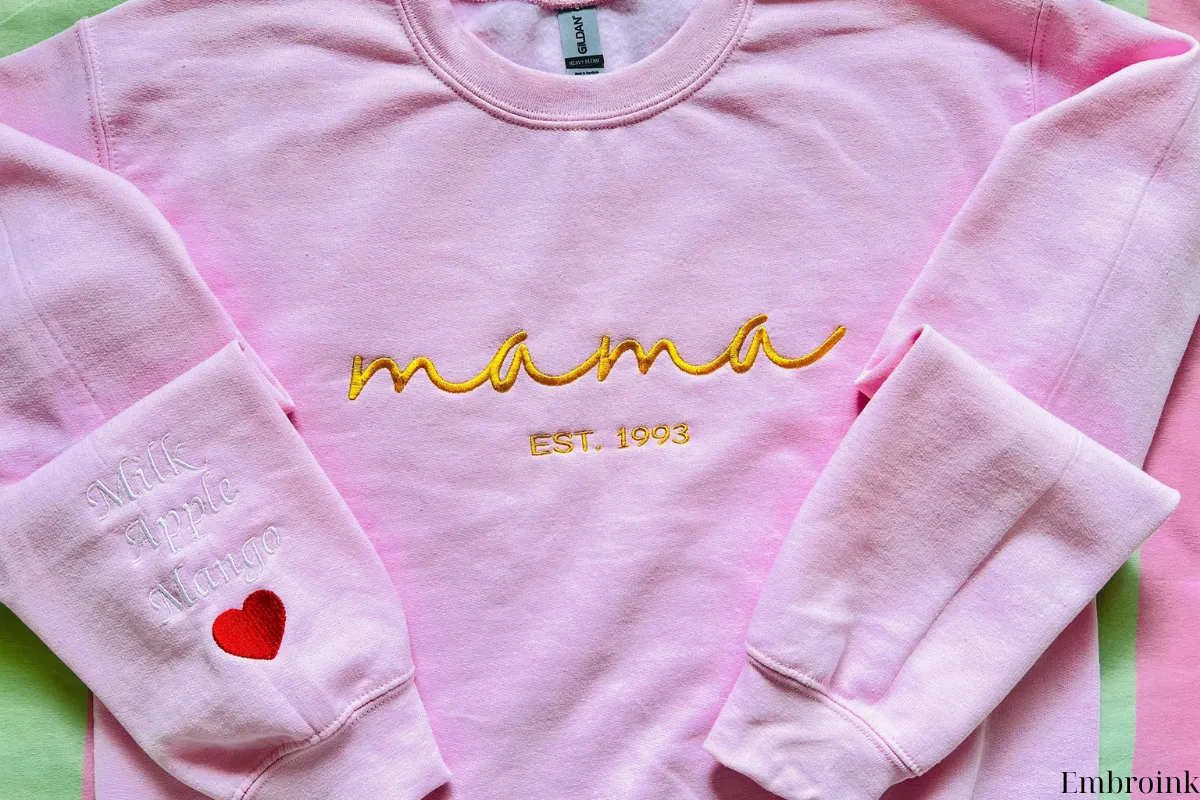
To effectively preserve small or hangable embroidered products in a wardrobe, you can follow these steps:
- Choose suitable hangers: Select soft and rounded hangers without sharp edges that could damage the embroidered products. Hangers made of materials such as wood or soft plastic are ideal choices to ensure that the products are not harmed while hanging.
- Carefully place the product onto the hanger: When placing the embroidered product onto the hanger, do so carefully to avoid tangling threads or distorting the product. Place the product onto the hanger gently, avoiding unnecessary pressure on delicate details.
- Arrange the products neatly on the hanger: Ensure that the embroidered products are hung neatly on the hanger and not stacked on top of each other. Organizing the products in this manner helps prevent wrinkles or tangled threads while keeping them in their original shape.
- Place the hanger into the wardrobe: After hanging the embroidered products on the hanger, place the hanger into the wardrobe carefully. Ensure that the products do not come into contact with each other or other objects in the wardrobe to avoid causing damage.
Additional storage measures
- Use neutral pH paper: If you store embroidered products in a box, adding a sheet of neutral pH paper inside the box can help absorb moisture and maintain the ideal preservation conditions for the products.
- Perform regular inspections: Conduct regular inspections of embroidered products to detect and promptly address any issues such as loose threads, stains, or poor storage conditions.
- Keep embroidered products dry: Ensure that the storage environment for embroidered products remains dry to prevent moisture that can lead to bacteria and mold growth.
- Use moisture-absorbing bags: Place moisture-absorbing bags inside storage boxes or fabric bags to absorb moisture and keep embroidered products dry.
Special preservation measures for each type of fabric and embroidery thread
Preserving embroidered products on silk fabric
To preserve embroidered products on silk fabric, it’s advisable to utilize waterproof fabric bags or silk-lined boxes. These storage options help shield the delicate embroidery from moisture and dust, maintaining their pristine condition. Additionally, it’s important to minimize washing of embroidered silk items by hand and restrict the use of machine washing. When washing becomes necessary, opt for cold water and mild detergents to protect the integrity of the silk fibers and intricate embroidery designs. This cautious approach ensures that the beauty and longevity of the embroidered silk products are preserved effectively.

How to preserve embroidered products on linen fabric
To safeguard embroidered products on linen fabric, it’s recommended to employ fabric bags or silk-lined boxes for preservation. These storage solutions provide protection against moisture and external elements, maintaining the quality of the intricate embroidery. When it comes to washing embroidered items on linen fabric, opt for warm water and detergents specifically formulated for this fabric type. This ensures effective cleaning without compromising the integrity of the linen or the embroidery. Furthermore, it’s essential to avoid direct sunlight exposure during drying and minimize the use of dryers to prevent potential damage to the embroidered products. By adhering to these practices, the beauty and durability of embroidered items on linen fabric can be upheld over time.
Considerations when preserving embroidered products with special thread
- For embroidered products featuring special threads like metallic or silk threads, it’s crucial to refrain from machine washing and opt for gentle handwashing instead. Careful handling during washing helps preserve the delicate nature of these threads and prevents damage to the embroidery. Regularly inspecting the special threads is also advisable to ensure they remain intact and free from tangles. When washing, utilize laundry bags and anti-tangle bags to shield embroidered items with special threads from external impacts and minimize the risk of tangling or snagging. By adhering to these precautions, the integrity and intricate details of embroidered products with special threads can be maintained effectively.
Notes and tips to make embroidery products always durable
To ensure that embroidered products always maintain their beauty and durability, here are some important tips and considerations:
Avoid direct sunlight exposure
- Sunlight can fade colors and damage the thread fibers of embroidered products.
- Store embroidered products in a well-ventilated area and avoid direct sunlight exposure by placing them in bags or boxes.
Keep embroidered products dry and well-ventilated
- Ensure that embroidered products are always stored in a dry environment to prevent bacteria and mold growth.
- If embroidered products get wet, dry them immediately and allow them to air dry naturally before storage.
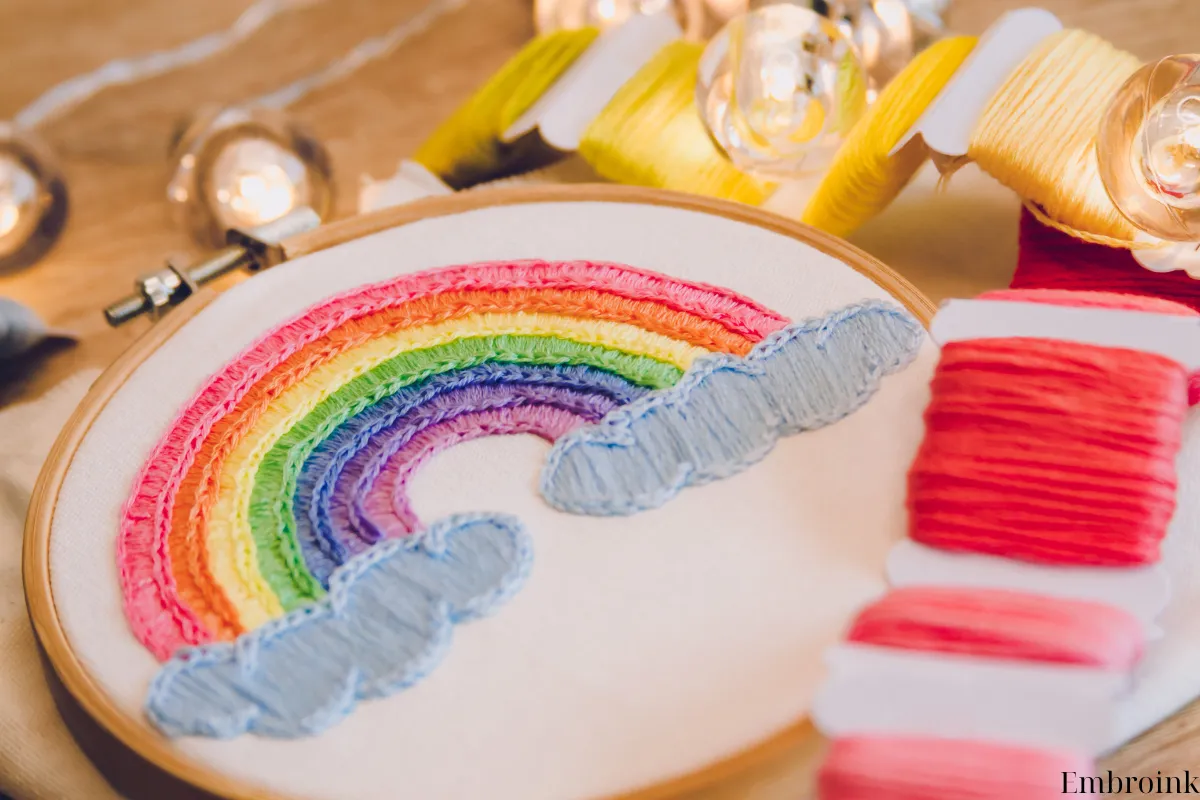
Clean embroidered products properly to maintain their brightness
- Use gentle cleaning methods and avoid using harsh detergents to prevent damaging the thread fibers or fading colors.
- If washing embroidered products is necessary, do it by hand or use the gentle cycle of a washing machine.
- Avoid using high-heat dryers to keep embroidered products soft and prevent them from shrinking or distorting.
By following the above tips and considerations, you can ensure that your embroidered products will always retain their beauty and durability over time, creating beautiful and long-lasting embroidered artworks.





